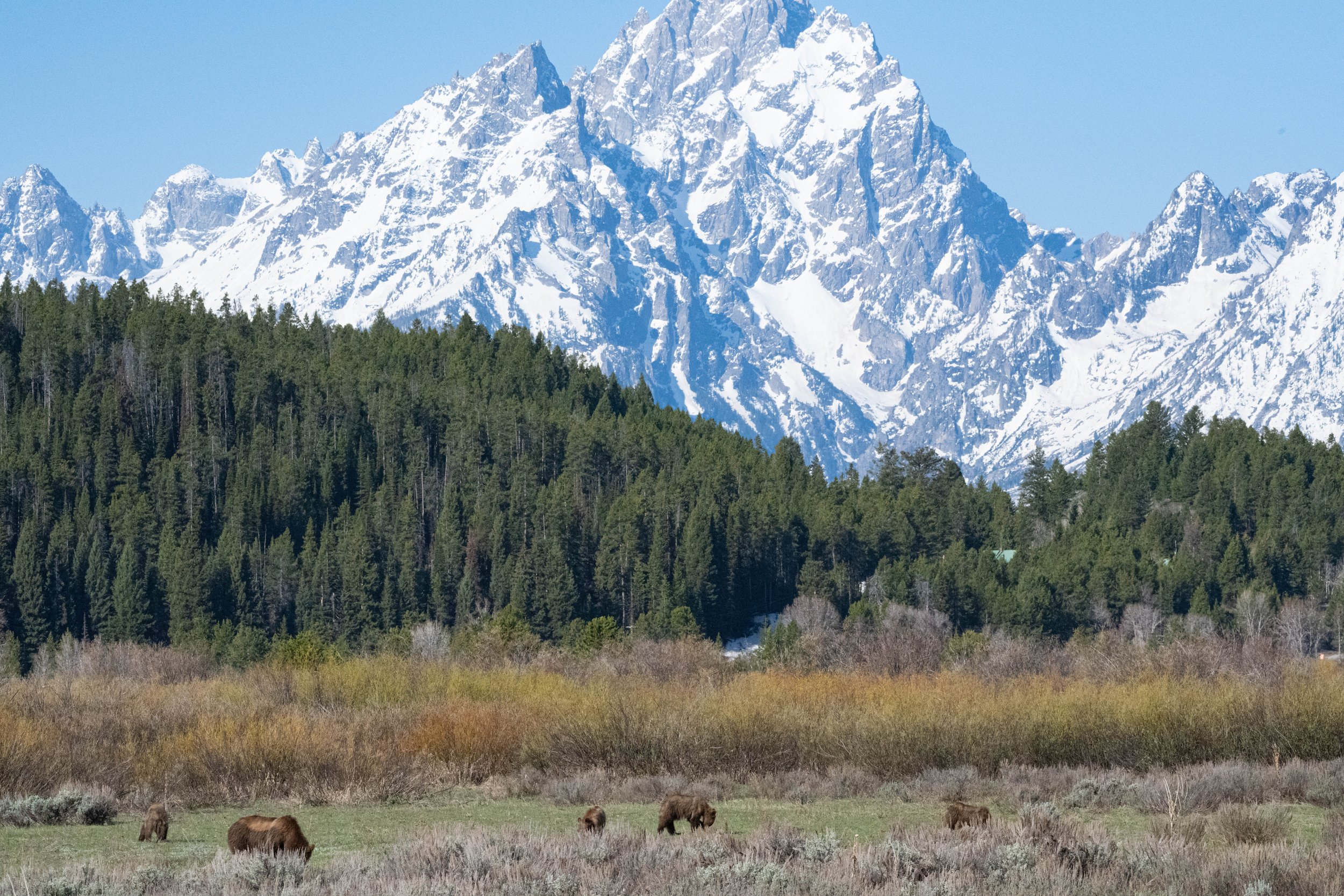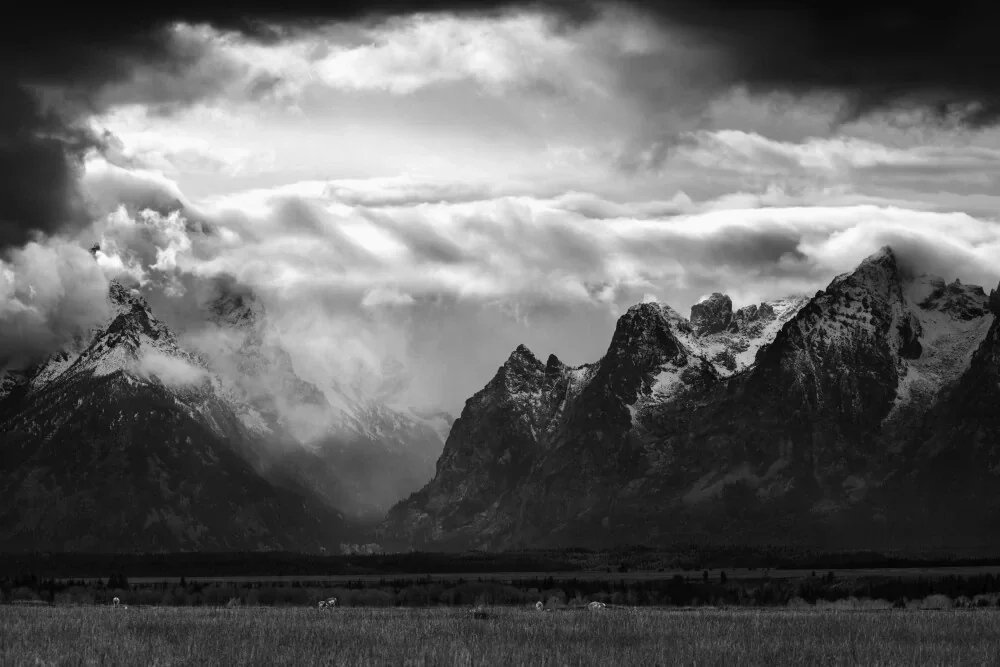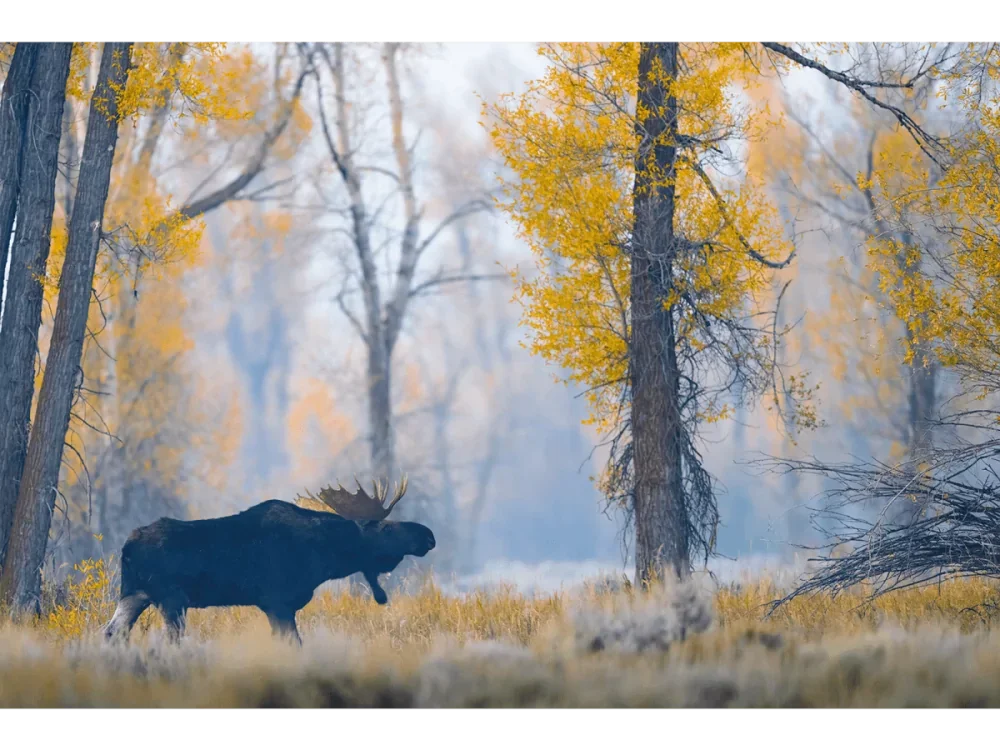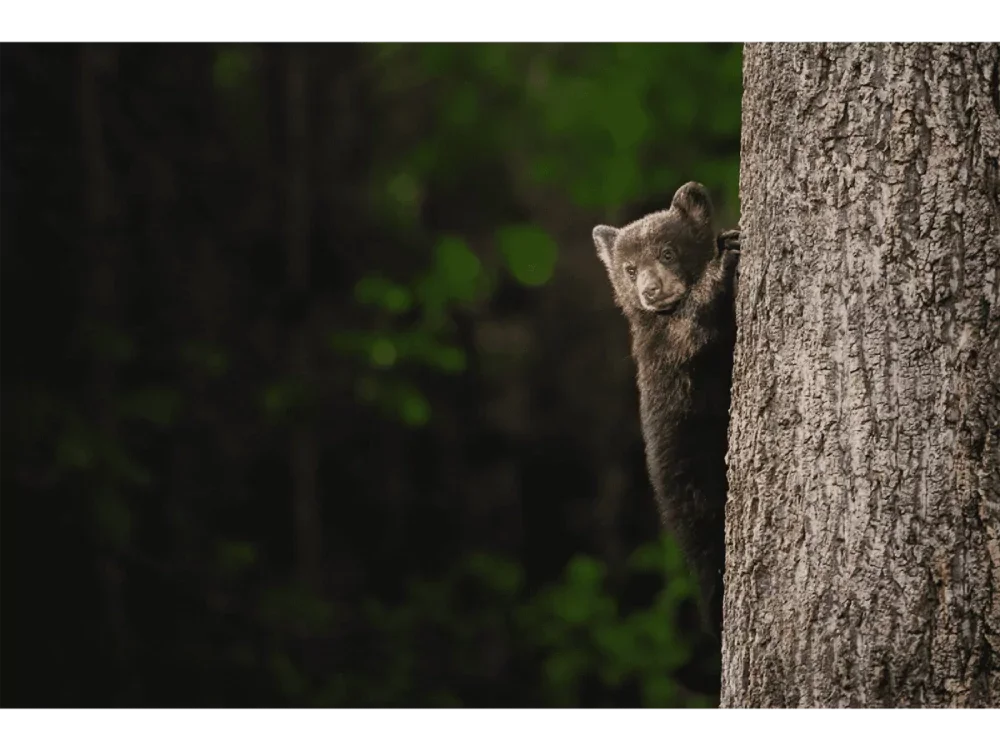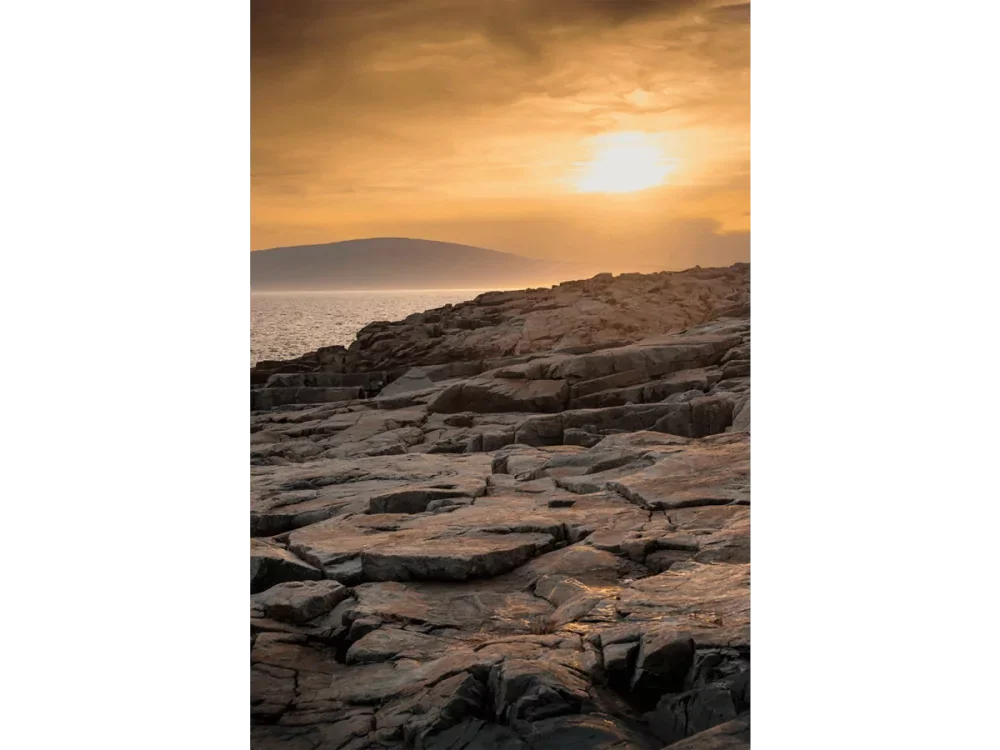Grand Teton Grizzly Bears
Introduction
In early October of 2023, I spent a wonderful 11 days in Grand Teton National Park and surround areas searching for and photographing grizzly bears. If you’ve never seen a grizzly in the wild, I promise it’s not an experience you’ll ever forgot. In this article I’ll share when/where to find grizzlies in GTNP, Photography tips for better bear photos, basic travel tips and plenty of photos.
Where to see Grizzlies in Grand Teton National Park
Grand Teton Park is part of the Greater Yellowstone Ecosystem and it’s techically possible to see Grizzlies anywhere within the park (or even outside the park). Grizzlies cover great distances in search of food throughout the year, so it’s possible to visit the park and not see any bears, but with a little knowledge and knowing the right locations you can up your chances.
Best months to see Grizzly Bears
Before sharing some of my favorite locations to find Grizzlies, it’s important to first know the best times of day and year to up your opportunites for viewing/photographing them. There’s no exact hibernation schedule because it’s dependent on weather, but the grizzlies typically go to den in early November and emerge in early April (sometimes earlier). When they come out of their den, they’ve lost 20% or more of their body weight and are looking for food and you can typically find them in the valleys where there is less snow and easier access to food. In the summer, the bears head to higher elavations to work the alpine meadows in search for food, but return the the valleys in the autumn for a final push for food before going to den. I’ve been to GTNP in both May and early October and both were great times for grizzlies and we saw them almost daily. The graph below, while not definitative, can help deterine the optimal times to see the grizzlies.
Best times to see Grizzly Bears
Much like other types of wildlife, bears are more active in the early mornings and late afternoons. During my times in the Teton’s, I’ve normally had better success in the morning searching for them. I’m not sure if that’s due to them being more active, or just less people out looking; but i’ve had some of my best photos early in the morning. The nice thing about the Spring and Fall is that they’re out searching for food, so you can see them almost any time of day; but i’d generally recommend from sunrise and the first two hour afterwards and late afternoon until sunset.
Grizzly Bear Hot Spots in Grand Teton National Park
As mentioned above, you can see Grizzlies almost anywhere within Grand Teton park. You can, however up your chances of seeing them by hitting a few areas they tend to frequent. You’ll generally know these locations because you’ll often find other parked in these areas waiting. One really important behavior to be aware of is that females with cubs have developed a behavior where they’ll hang out near roads. They do this because the leading cause of death of cubs is from male grizzly bears. Male grizzlies don’t like being around people and cars, so many of the females have adapted this behavior as a way of helping keep their cubs safe. I mention this because it’s helpful to know, but also as a reminder that when driving in these areas it’s important to drive slow and be aware!
The three areas below are where i’ve had the most success in finding grizzlies, but i’ve also seen them in other areas of the park to don’t necessarily limit your searching to just these areas.
Pilgrim Creek Area
Pilgrim Creek area is probably the most famous area for bears and the locations where i’ve had the most consistent luck in finding them. You’ll know this area because there are dedicated car pull off areas on the main road. There is a dirt road (Pilgrim Creek Road) that goes down along the creek. This road can often be closed by the park service during busy times; but i’ve had great success early in the morning before the park gets too busy (get here before sunrise for a shot to go down the dirt road).
Willow Flats
Willow Flats is another area that is popular with the grizzlies. It’s a few miles down the road from Pilgrim Creek and is a large expanse open areas peppered with sage brush and willows which allows for good places to hide. It can also provide excellent opportunity for amazing backgrounds in images as Mount Moran looms in the background.
Jackson Lake Dam and Oxbow Bend
The final location(s) are really the areas around the snake river. I’ve had some good luck seeing bears cross the river near Jackson Lake Dam (the photo at the top of the article was taken there) and the areas around Oxbow Bend. The Oxbow area is also an excellent stop early in the morning for some landscape photos.
Grizzly 399
I’d be foolish to write a blog post about the grizzlies of Grand Teton and not at least mention Bear 399. Grizzly 399 is probably the most famous bear in the world and considered the matriarch of the Tetons. As of this writing she is 28 years old, which is quite old for a Grizzly. She came out of den this past year with a cub and I believe that is the oldest a bear has been documented with a cub. In her life she has had 22 cubs and some of the bears in the area are her offspring. During my trip in October we caught a few glimpses of her and her new cub (nicknamed Spirit), but didn’t capture any images of her. During my first trip to Tetons in May of 2021 I was able to see her and her four cubs and capture some images at willow flats.
Grizzly 399 with her 4 yearling cubs at Willow Flats - 2021
Photographing Grizzly Bears
My early photography was focused primarily on Landscapes and Cityscapes and so first time I attempted to photograph any bears or wildlife i was completely lost. I didn’t really know how to setup my camera or shutter speeds and when i got back to look at my photos i was very disappointed. I thought i’d share some tips for those who may want to photograph wildlife, but don’t have much experience doing so.
Safety First
Before sharing those tips, it’s important to share a note about being safe. Bears are wild animals and frankly can kill you with the flick of their paw if they wanted to. While, they are not the monsters that they’re sometimes portrayed as, it’s important to follow some rules.
Teton Park requires keeping a minimum distance of 100 yards from any bear or wolf.
Many of the Grizzlies have tracking collars and you will often find park volunteers directing traffic and people. Please listen to them.
Do not disturb the bear, don’t try to get its attention or make it look at you. Just observe and enjoy.
Don’t feed or attempt to lure them with food in any way. Be mindful of any food/scents on you. Bears who associate people with food are often put down because they become a danger. A fed bear is a dead bear.
Tips for photography
The tips below are not intended to be a comprehensive guide or beginners guide. Hopefully if you’re reading this you have some experience with photography and using your camera, but maybe haven’t done a lot of wildlife photography. If that’s the case i hope the below tips will help you.
Tips for photographing bears
If you’re planning a trip to photograph bears/wildlife, I’d suggest practicing before going. Birds are one of the more challenging things to photograph and i often recommend learning with them. They help you learn shutter speeds, panning and acquiring the subject through the view finder.
You’ll want to make sure you have a decent long lens in order to help keep a safe distance. A 400mm or greater focal length is recommended. There are companies which rent lenses on a weekly basis and it can be a great option if you don’t own one.
Shoot wide open or just slightly stopped down. If you have an F/6.3 lens, shoot at F/6.3 or F/7.1.
Set your camera for continuous auto focus
If you have a newer camera, use eye auto focus if possible
Learn about and use exposure compensation.
If you have tripod or monopod, use it.
Turn on continuous shooting and shoot bursts rather than single photos.
Use Fast shutter speeds and learn your shutter speeds.
Slow moving bears I will generally shoot between 1/500 - 1/800 sec.
Moving bears 1/1000- 1/2000+
These are general rules, and it’s important to experiment.
Pictures of Grizzly Bears
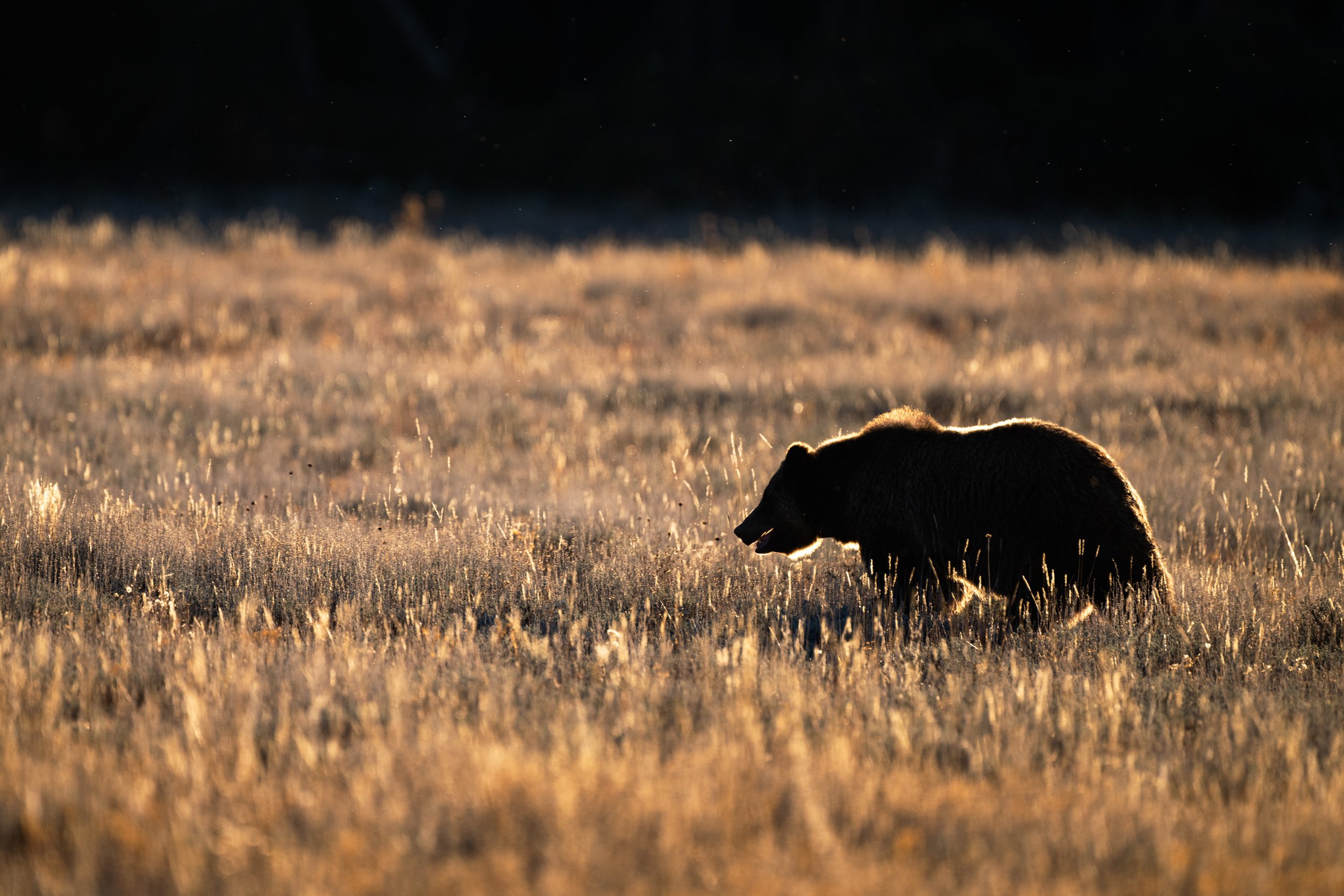
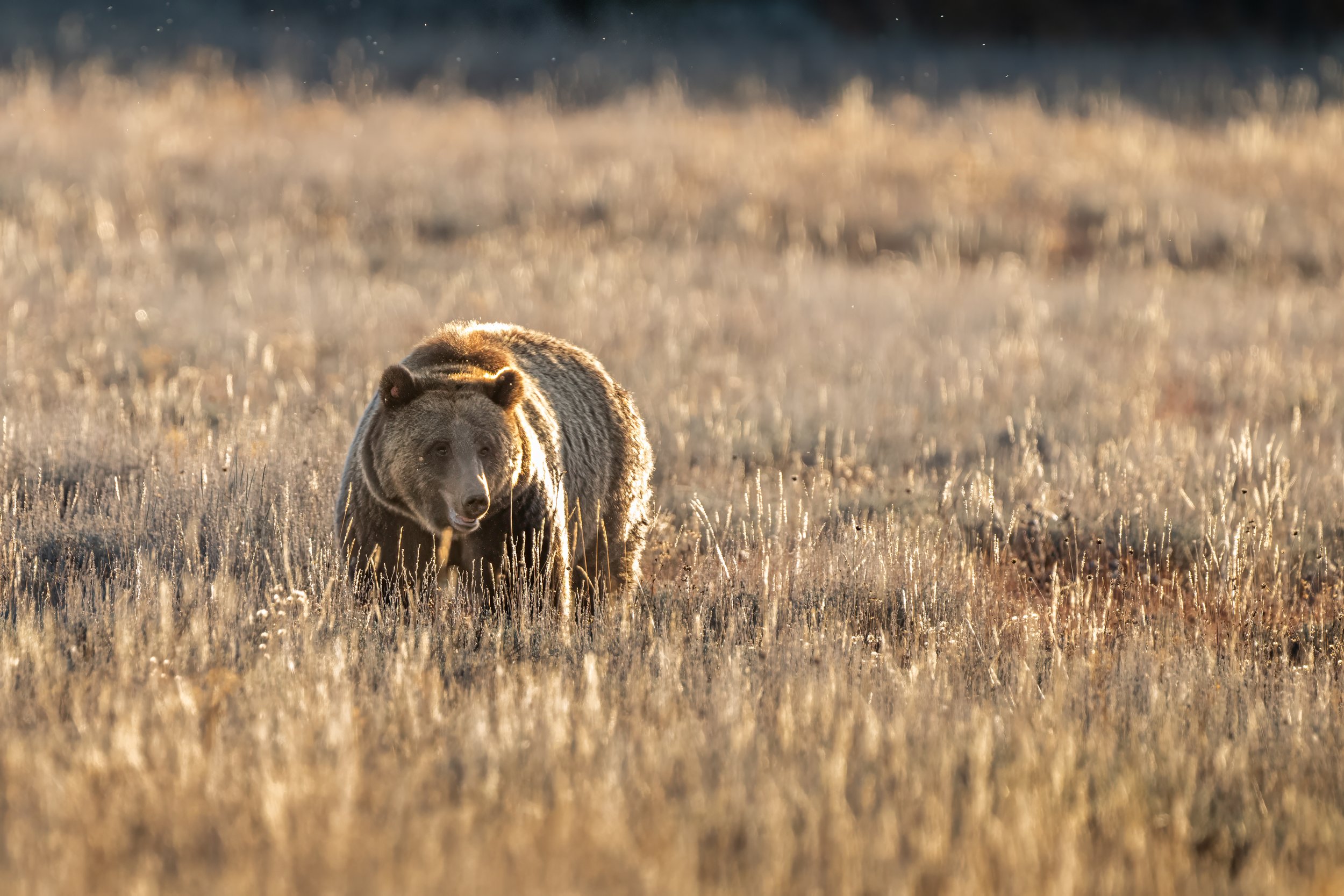
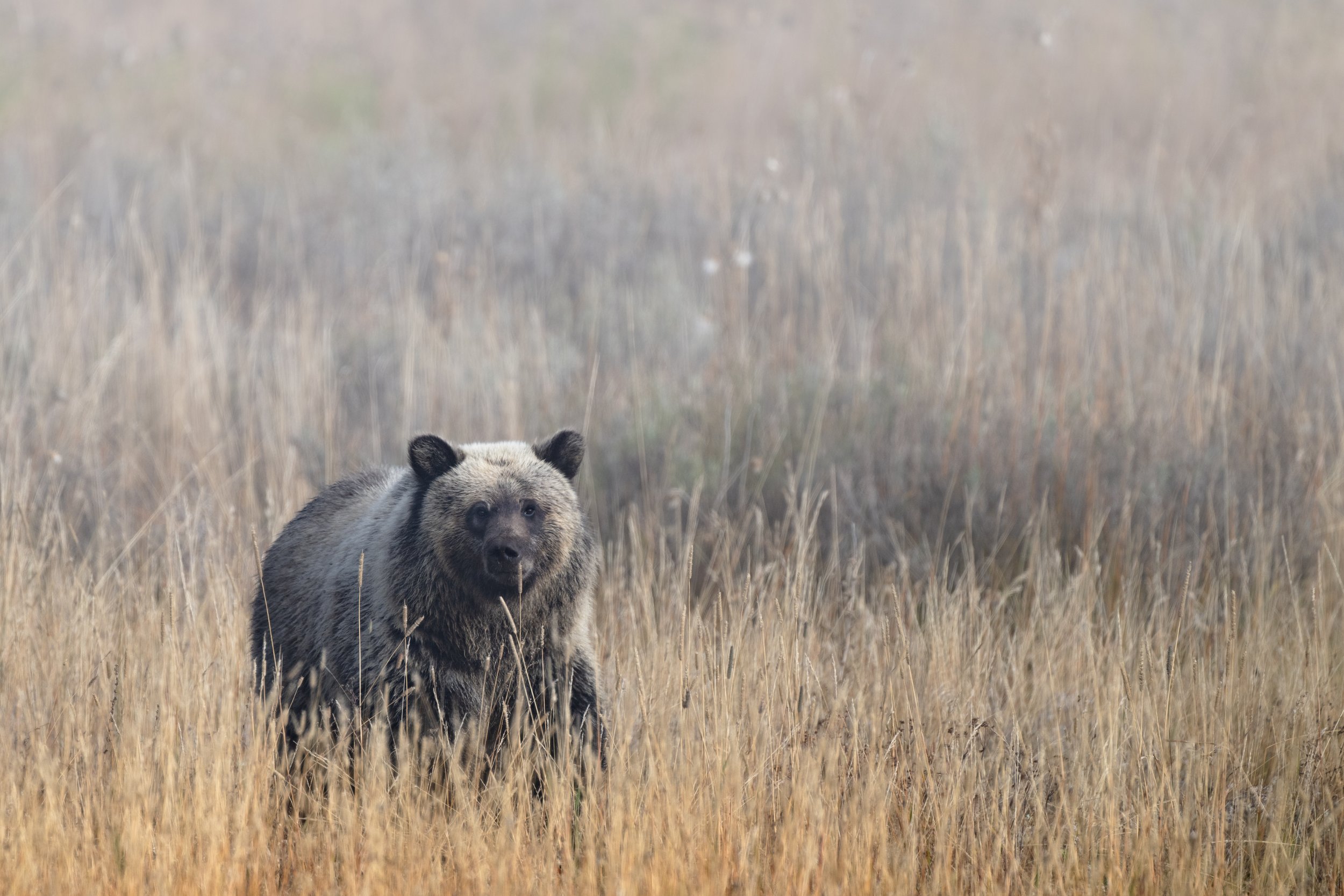
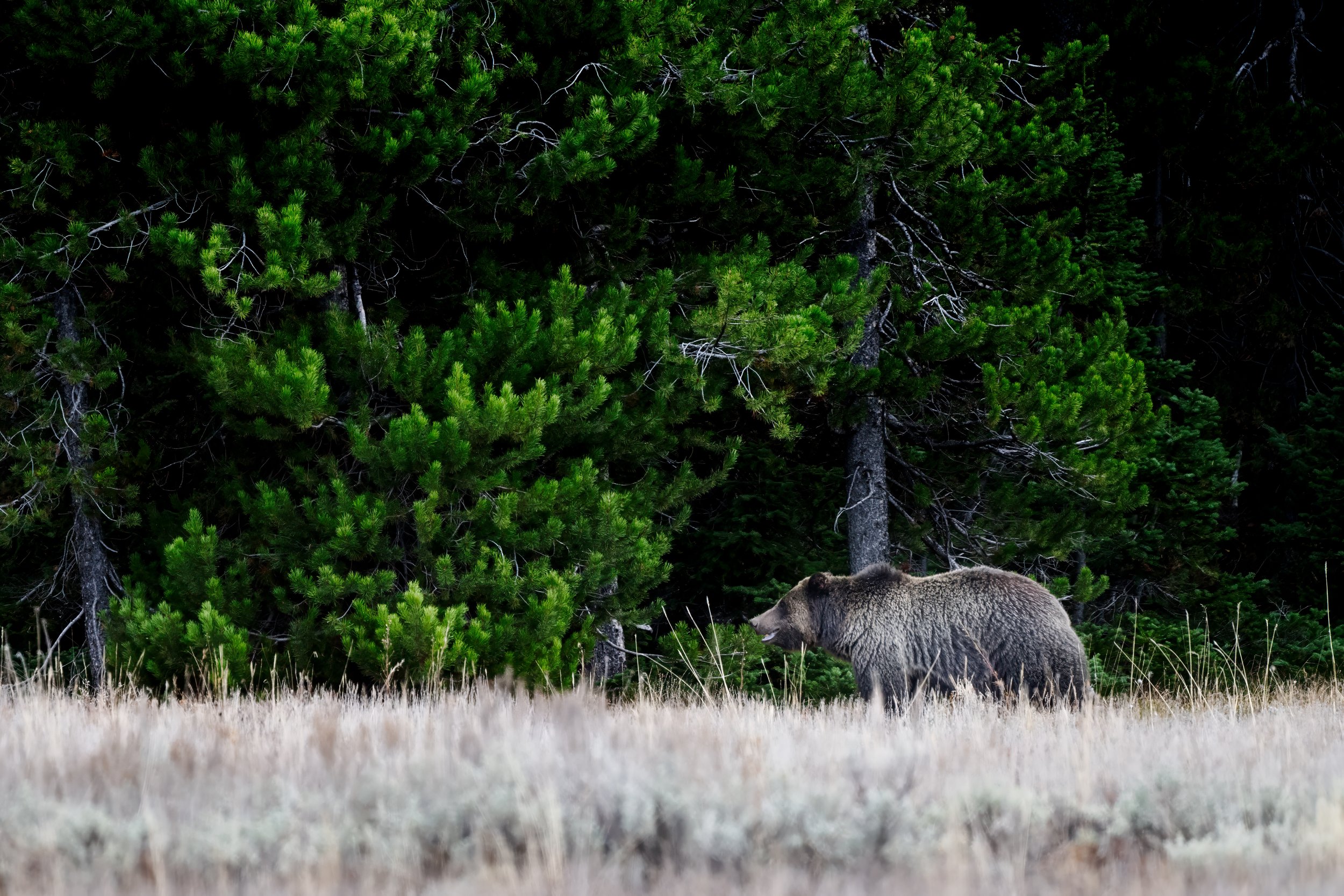
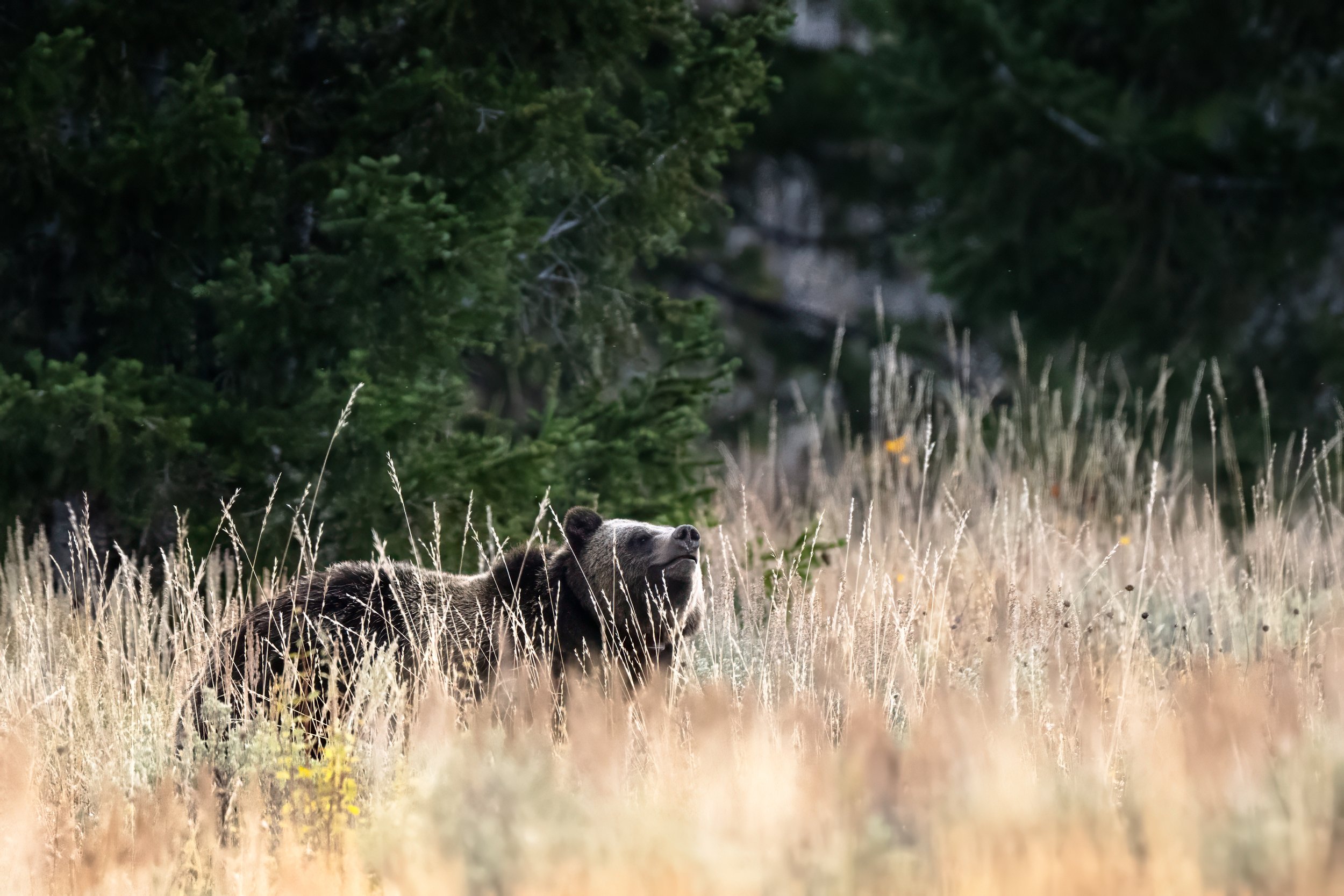
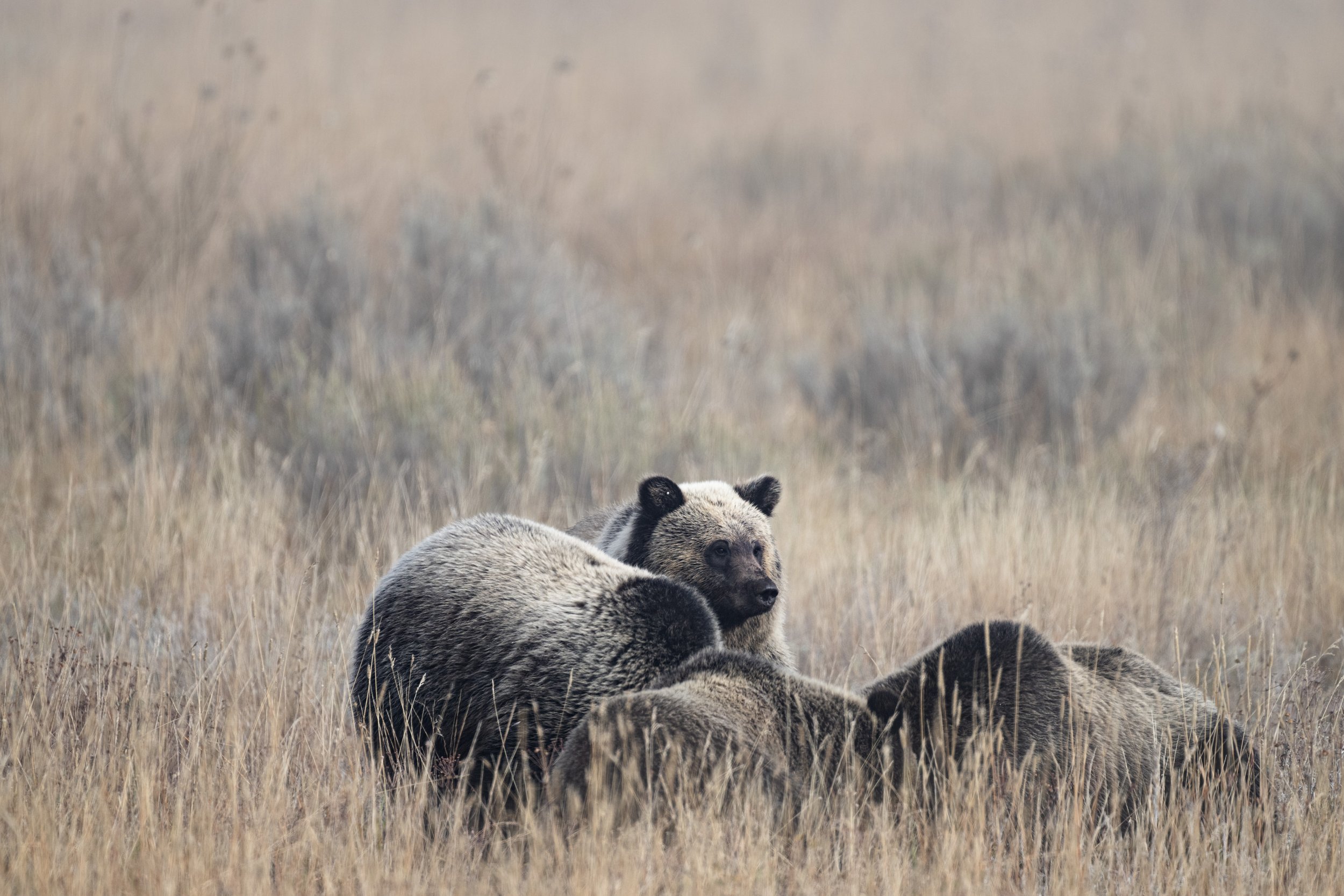
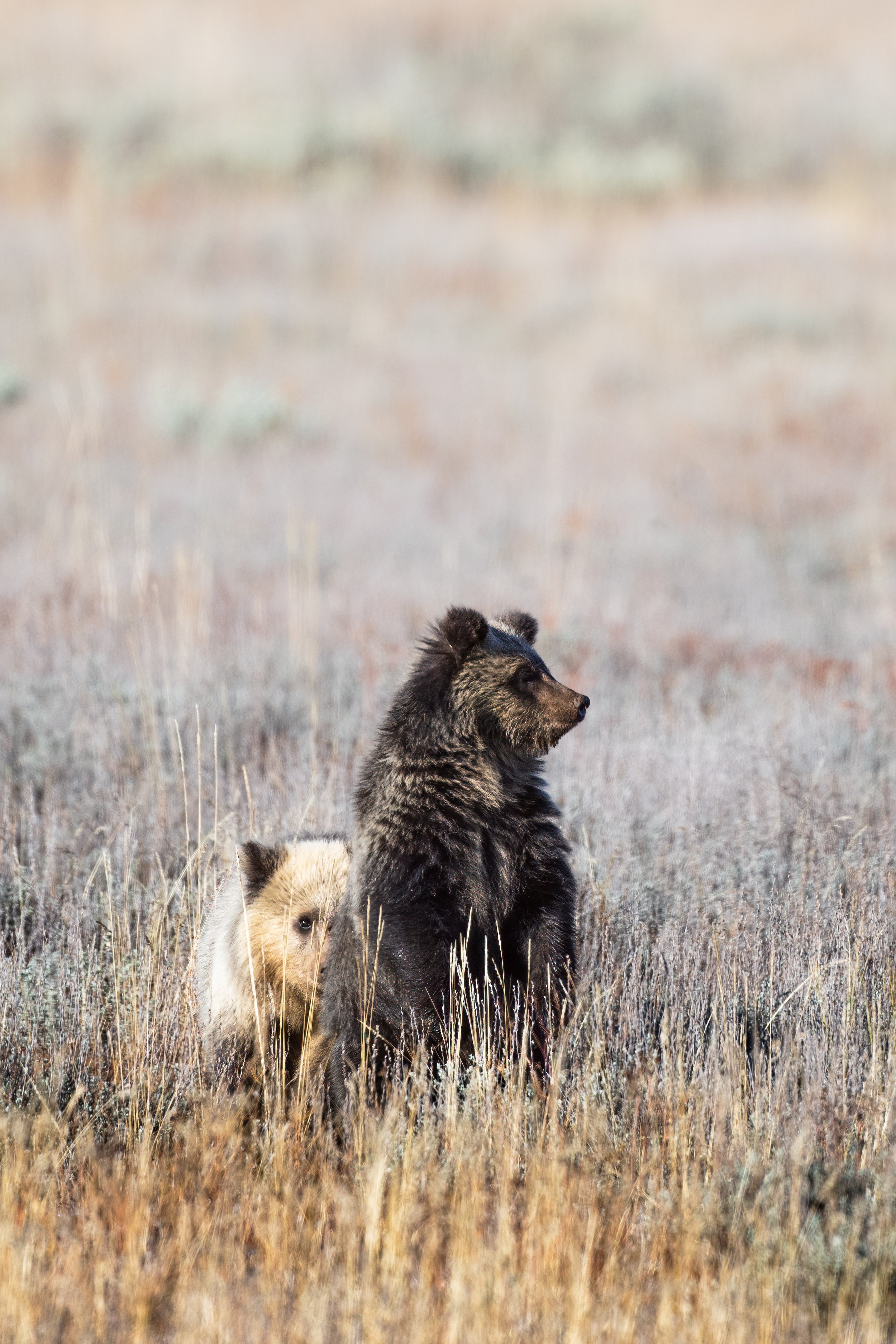
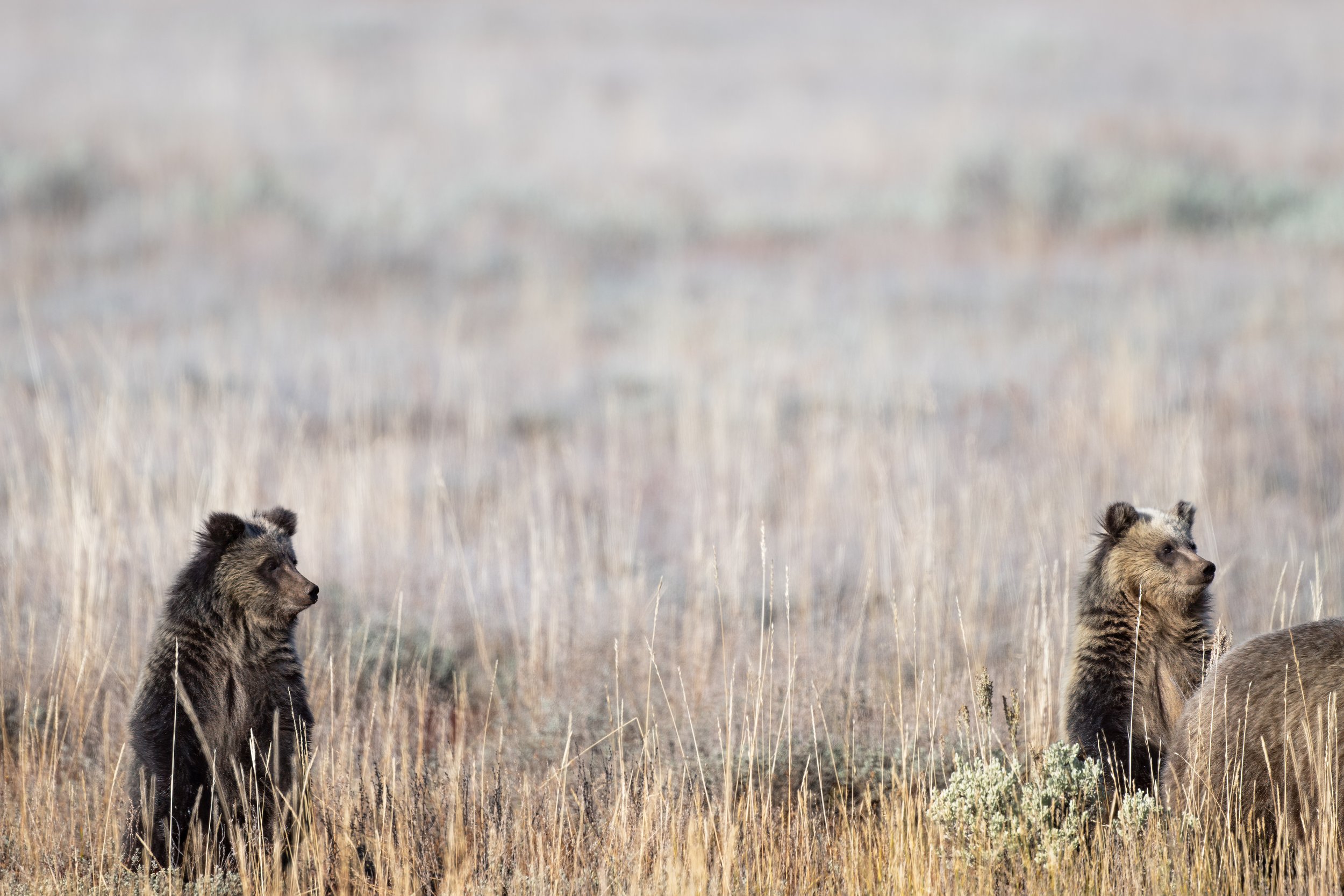
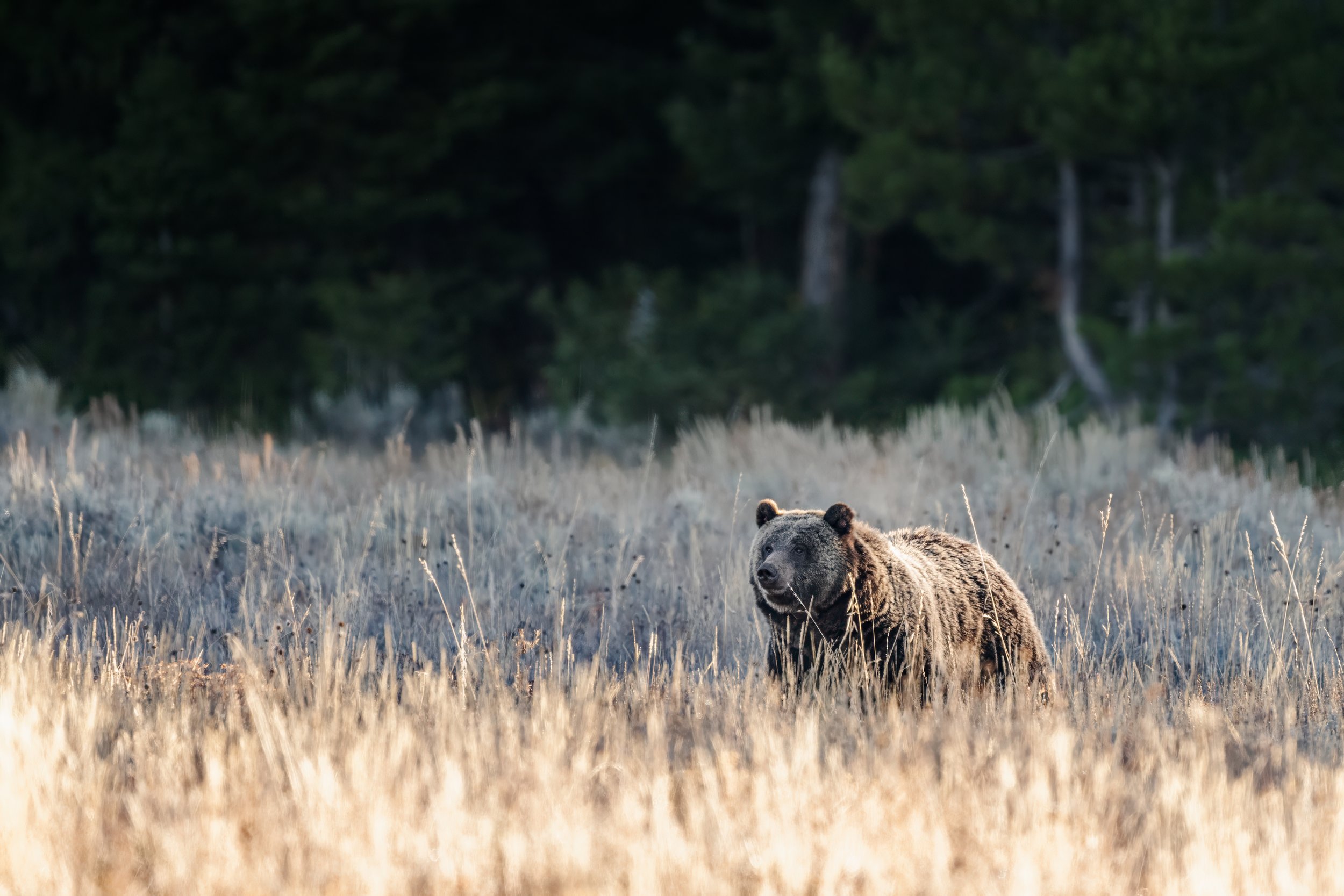
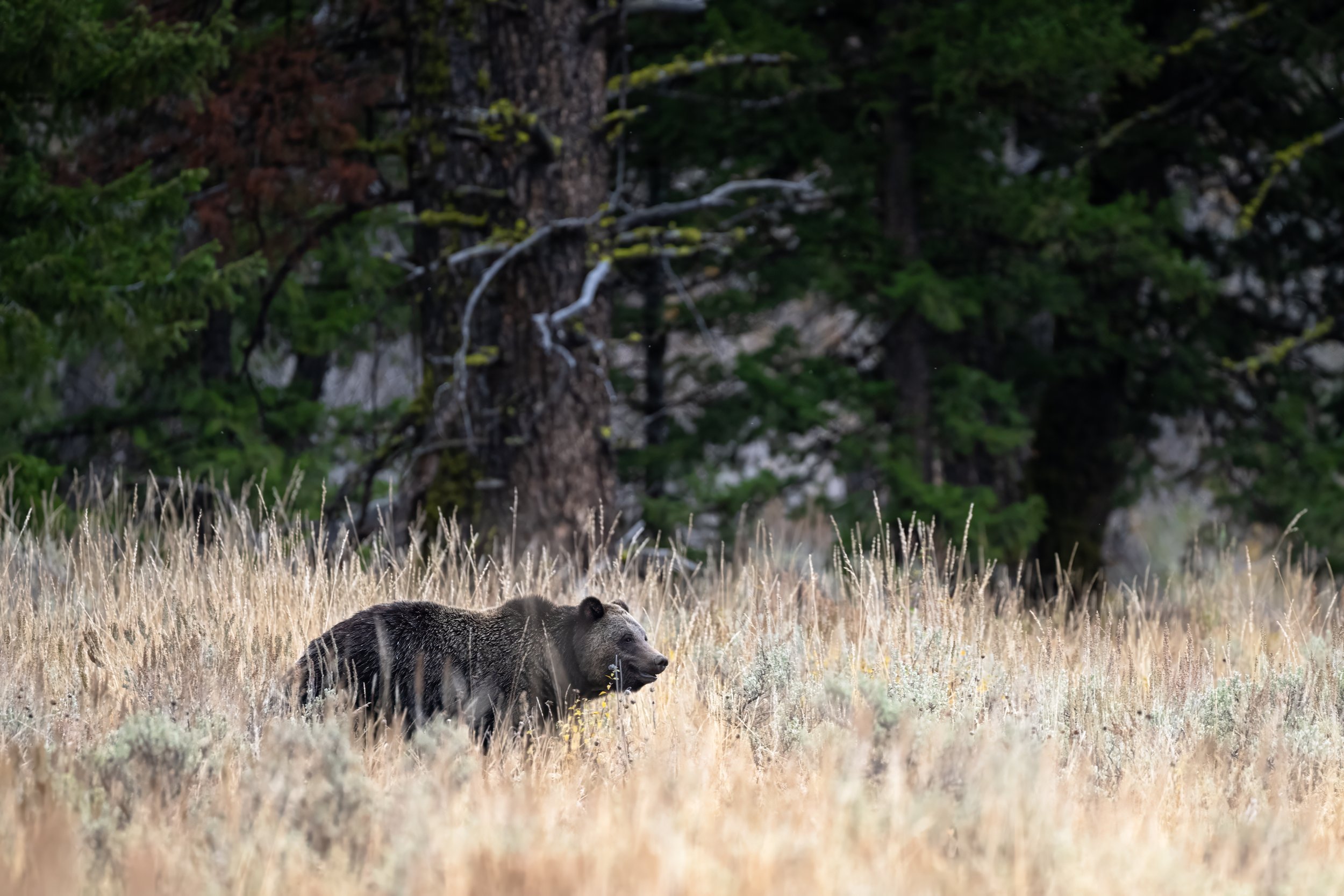
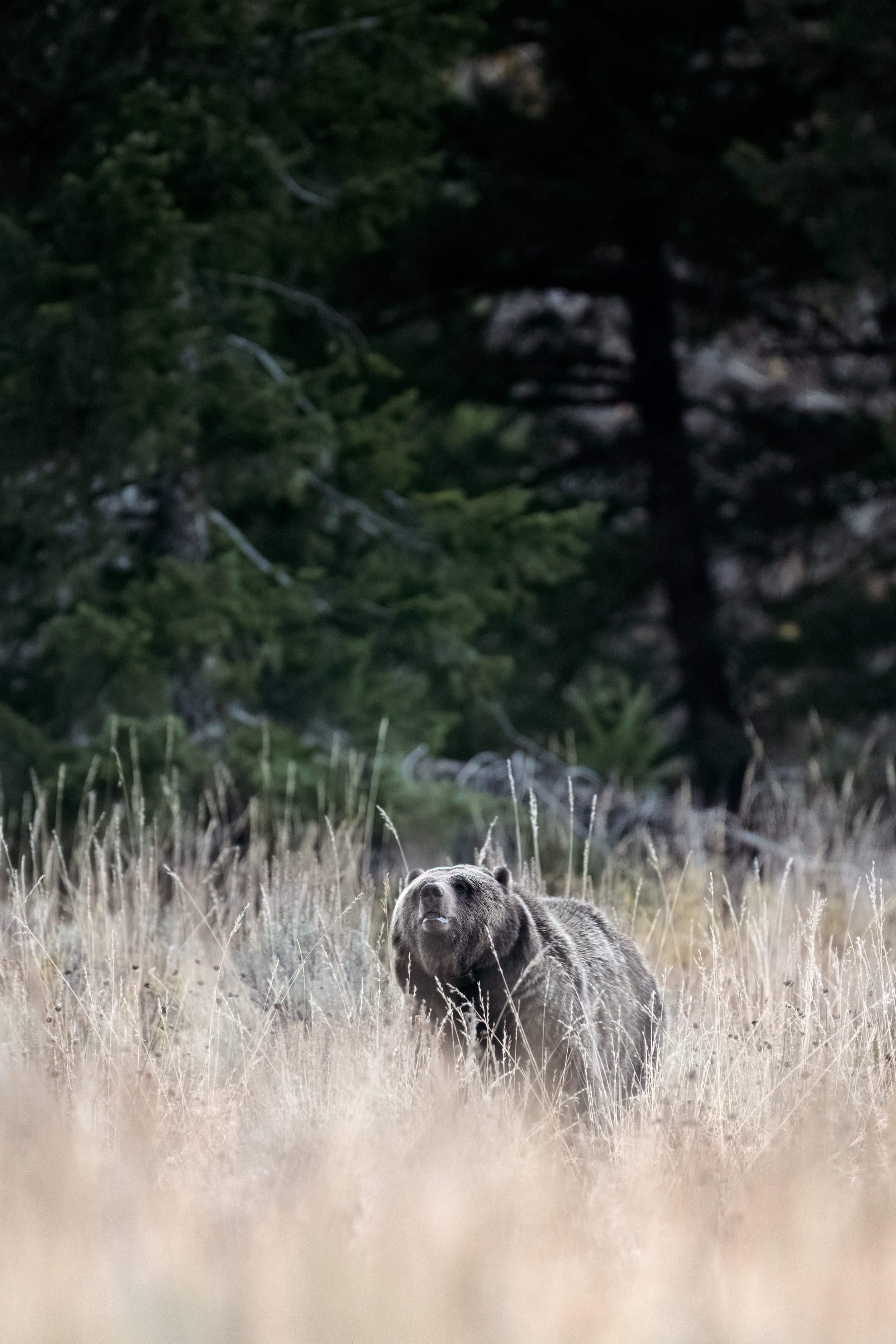
Non-Bear Photography
While my main interest in going to the Teton’s was the photograph grizzly bears, the non-bear photography was also phenomenal. When we were there in early October the moose rut was well underway and it wasn’t uncommon to see gatherings of five to eight moose together. We also saw Pronghorn, Bison and Elk daily along with incredible landscapes. Below are a collection of some of my favorites.
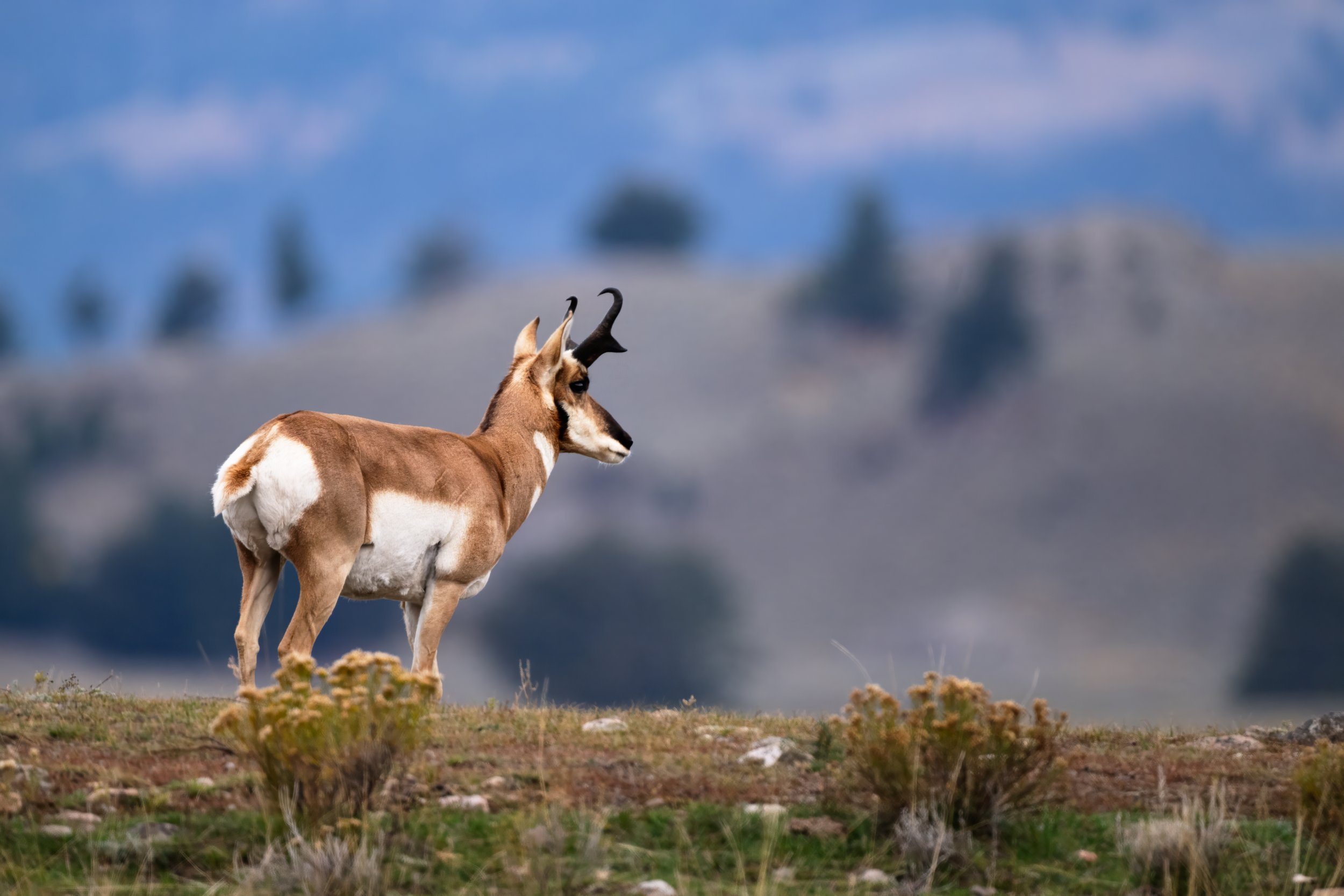
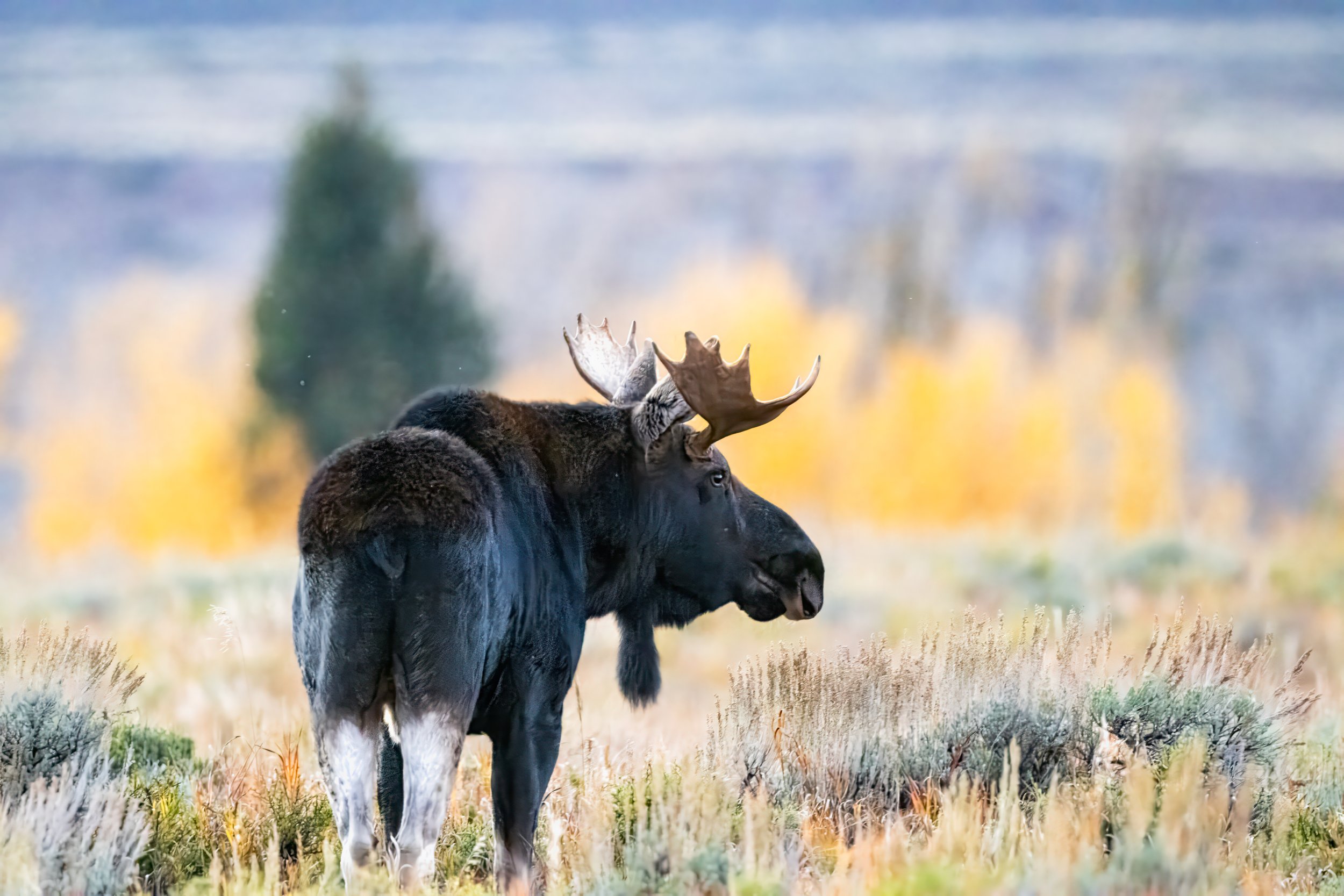
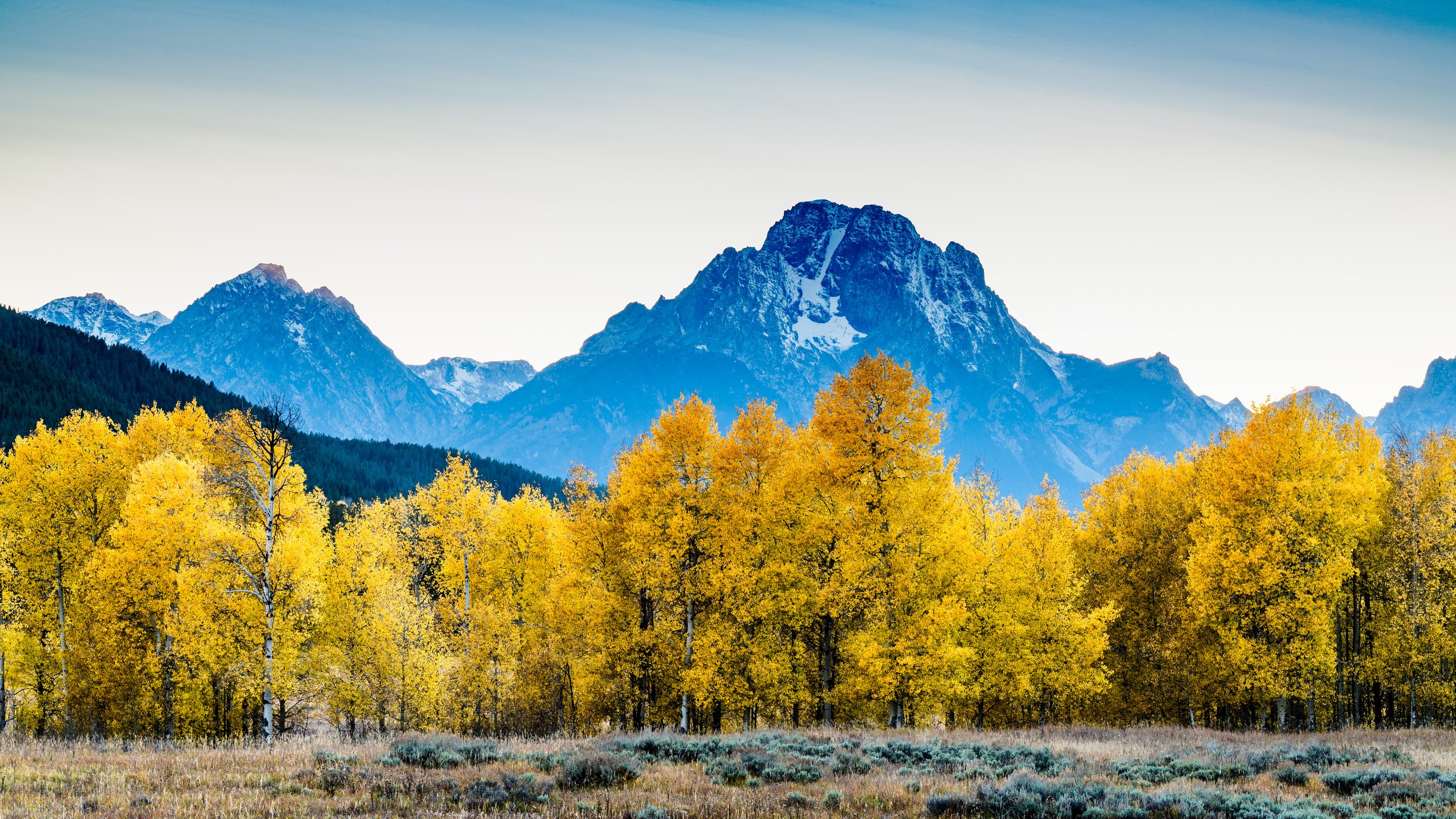
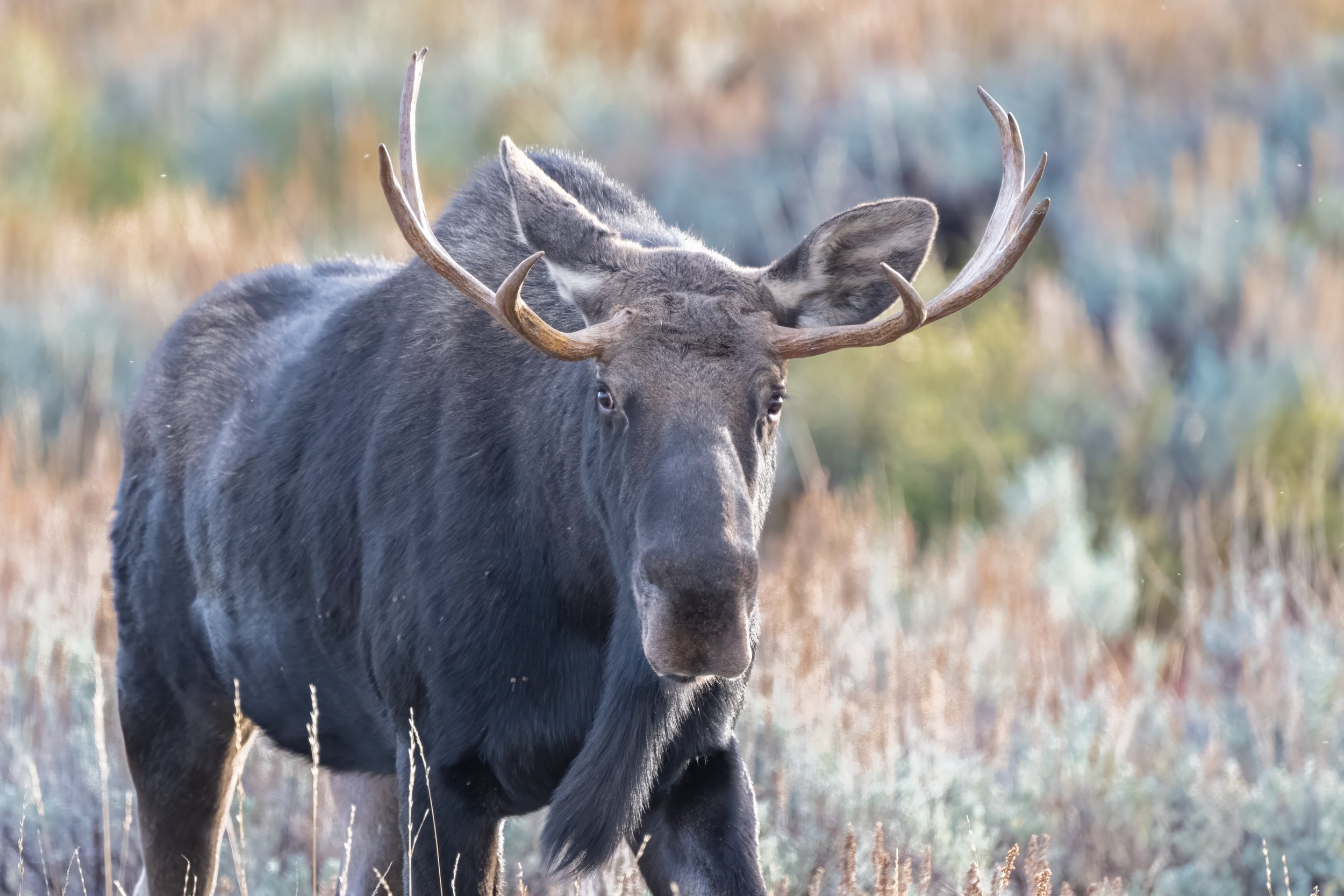
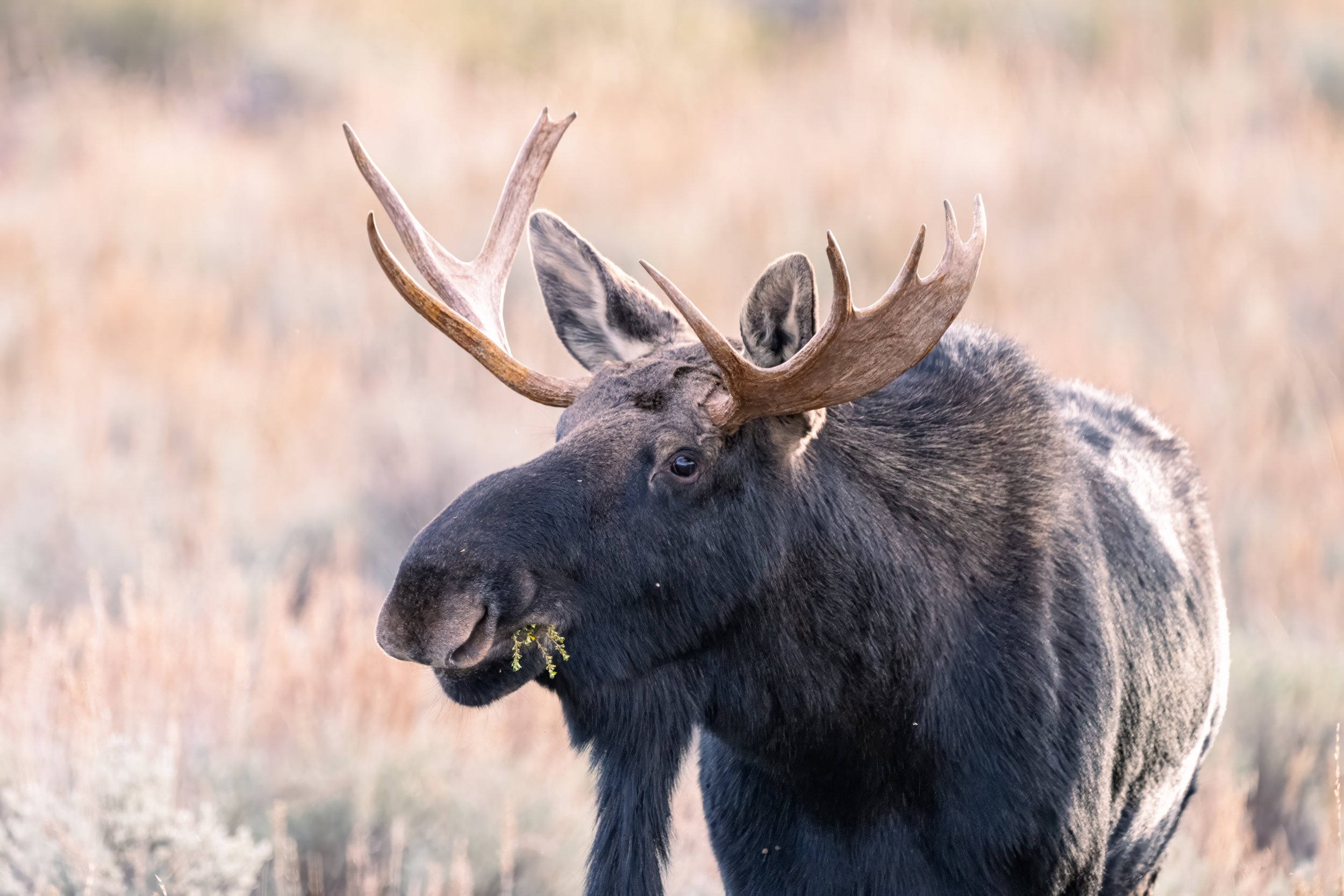
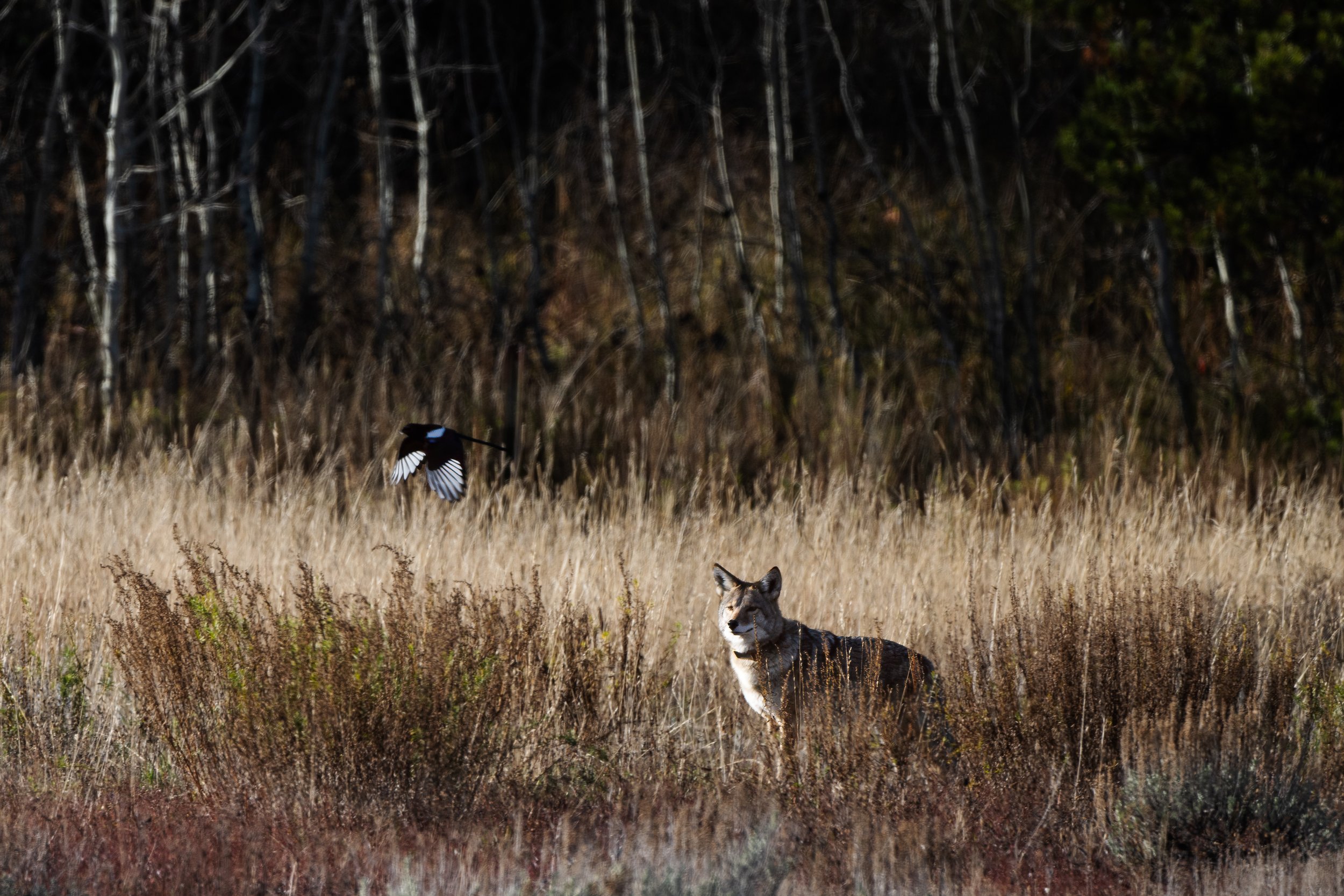
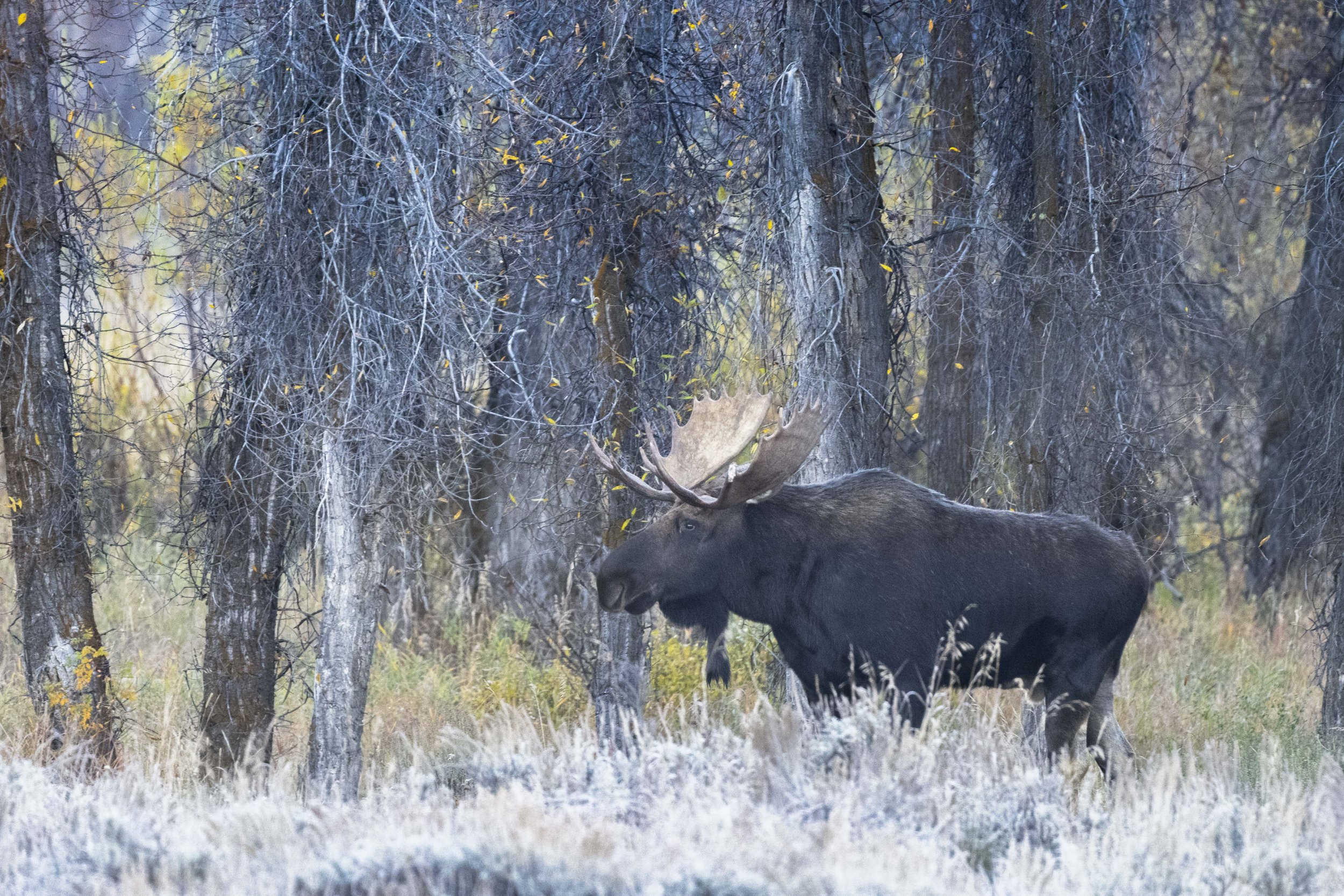
Conclusion and Resources
Hopefully you found this post helpful as you plan a your time in Grand Teton National Park. It’s truly a special place and in my opinion the prime location in the continental US to see and photograph grizzly bears in their natural environment.
Resources
NPS Site - https://www.nps.gov/grte/index.htm
Grizzly 399 - https://en.wikipedia.org/wiki/Grizzly_399
Latest Art




